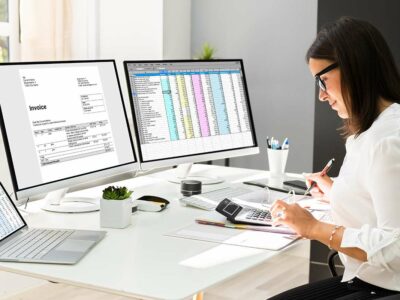
Generally, plant assets are among the most valuable company assets and tend to be relied on greatly over the long term. As such, these assets provide an economic benefit for a significant period of time. From an accounting perspective, plant assets are typically held on the balance sheet at historical cost (what the company paid for them) less depreciation (ongoing wear-and-tear expense) over time. This can help provide accurate financial information if the market for plant assets is unusually plant assets volatile. Proper management of the disposal of plant assets ensures transparency in financial reporting and helps maintain accurate records of a company’s asset inventory.

Asset Lifespan and Revenue Generation
A plant asset should be recognized at its costs when it fully meets the definition above by IAS 16. Some entities may also have internal policies that allow them to directly charge out the capital expenditure of a small value, usually below a certain threshold. This cost would be capitalised and added to the asset’s book value on the balance sheet. These assets are held by businesses for use in the production or supply of goods and services, for rental to others, or for administrative purposes.
Most Important Financial Statements
- The same process will be repeated every year at the end of the financial year.
- How do businesses decide when to replace a plant asset instead of repairing it?
- If you picture a business as a process that creates wealth for the owners, PP&E are the physical machine.
- Plant assets can take various forms depending on the nature of a company’s operations.
They can include land, buildings, machinery, equipment, vehicles, furniture, and fixtures. These assets are considered essential for a company’s operations and contribute to its long-term success. Though plant assets are sometimes seen as expensive, not all have the same value or are prioritized by a company. Plant assets are long-term fixed assets that are utilized to manufacture or sell What is bookkeeping a company’s products and services.

Buildings and Building Improvements

It also allows businesses to optimize their asset utilization, free up resources, and make informed decisions regarding replacement or upgrade of assets. By depreciating plant assets, companies can accurately reflect the decrease in value over time and allocate the cost of these assets to the periods in which they are used. Proper depreciation accounting is essential for financial reporting, decision-making, and accurately assessing a company’s overall profitability and asset values. Plant assets can take various forms depending on the nature of a company’s operations.
- Improvements are often considered separate assets because they represent a new investment beyond the original purchase.
- Current assets are expected to be used within a year or short-term time frame.
- This helps both sides—the giver gets a tax write-off and the receiver gains valuable tools without cost.
- The cost incurred would include legal fees, commissions, borrowing costs up to the date when the asset is ready for use, etc., are some of the examples.
- Each of these types is classified as a depreciable asset since its value to the company and capacity to generate income diminishes during the asset’s useful life.
What Are Plant Assets In Accounting

Depending on the industry, plant assets may make up either a very substantial percentage of total assets, or they may make up only a small part. Industries like heavy shipping or oil extraction stand to employ a greater percentage of plant assets than industries like software, in which teams may be remote and sometimes globally distributed. Let us try to understand the depreciation and plant asset disposal methods.
- Machinery and equipment include any machines, tools, and devices used in production, manufacturing, or service delivery.
- Machinery and equipment are typically among the highest-depreciating assets due to constant usage, which results in gradual wear and tear.
- Depreciation helps to reflect the gradual loss of value and obsolescence of these assets as they are used in the production process or over time.
- This categorization provides clarity in financial reporting, showing stakeholders the long-term resources a business relies on to maintain and grow its operations.
- Thus, for accounting and plant asset disposal, they are recorded at cost, and are depreciated over the estimated useful life, or the actual useful life, whichever is lower.
Proper recording and classification of plant assets in accounting documents their cost, useful life, and depreciation, showcasing their value in the financial statements. Depreciation captures the gradual loss of value and wear and tear of plant assets, allowing for accurate financial reporting and asset management. Plant assets, also known as fixed assets, are tangible assets that are used in the production process or to generate revenue for a company over a prolonged period of time. These assets are expected to provide economic benefits to the company beyond the current accounting period. Plant assets are considered non-current assets and are categorized as long-term assets on a company’s balance sheet. Current assets and plant assets represent Bookstime two distinct types of assets on a company’s balance sheet, each serving different financial and operational roles.
